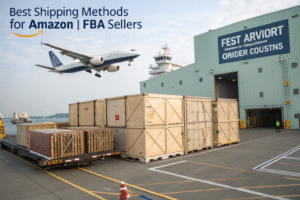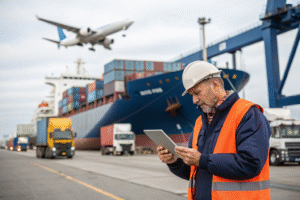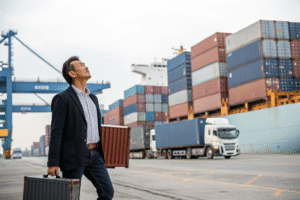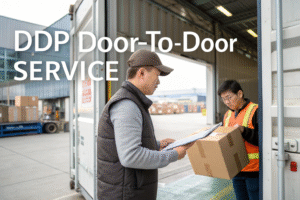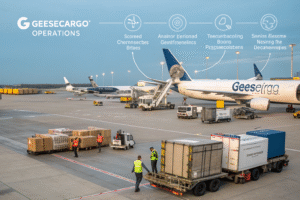Southeast Asia is emerging fast—but so are its tariffs. In 2025, Laos and Myanmar now impose up to 40% tariffs on imported consumer goods. For companies shipping apparel, accessories, and electronics from China, this spells trouble. Miss the mark, and you’ll watch your profit margin vanish at the border.
But there are strategic, legal ways to avoid paying full tariffs—if you understand how customs, Incoterms, bonded zones, and classification loopholes work.
In this article, I’ll share top logistics hacks we’ve used at GeeseCargo to help clients reduce or eliminate duties on shipments bound for high-tariff Southeast Asian markets.
What Are the New 40% Tariffs and Who’s Affected?

In August 2025, Laos and Myanmar rolled out new protectionist policies targeting finished goods. Customs now enforces tariffs ranging from 25% to 40% depending on the item and declared value.
Most Affected Product Categories:
| Product Type | Approx. Tariff |
|---|---|
| Apparel & Garments | 30%–35% |
| Fashion Accessories | 35%–40% |
| Consumer Electronics | 30%–40% |
| Promotional Items | 25%–40% |
These duties are applied at point of entry, regardless of invoice date or supplier location. Learn more at ASEAN Tariff Finder.
Why the Sudden Tariff Spike?
Governments in both countries aim to:
- Protect local manufacturing
- Reduce dependence on Chinese imports
- Generate revenue post-COVID
If your business depends on cross-border movement, you must adapt your freight strategy now to avoid cost spikes and cargo holds.
Hack 1: Ship Via Thailand or Vietnam for Duty-Free Reentry

One of the most effective ways to avoid full tariffs is by shipping indirectly through countries with favorable trade corridors.
The Smart Routes:
- China → Thailand → Laos via Nong Khai
- China → Vietnam → Myanmar via Myawaddy
Goods routed through these channels may qualify for preferential duty classification or bonded transit, especially if processed or repacked in the intermediary country.
Why Does This Work?
Some customs zones reset duty valuation if:
- The product enters under new country of origin
- There is minor repackaging or labeling
- You use a bonded export declaration
You’ll need documentation showing intermediate handling and origin adjustments. Learn more via World Bank Customs Guidelines.
Hack 2: Use FTAs and Origin Certificates to Slash Tariffs

Under ASEAN agreements, you may be eligible for reduced or zero duty if your product:
- Was manufactured in a member country
- Contains value-added components from within the bloc
- Comes with a valid Certificate of Origin (Form D or Form E)
Popular Trade Agreements in 2025:
- China-ASEAN Free Trade Agreement (CAFTA)
- RCEP (Regional Comprehensive Economic Partnership)
- ACFTA Rules of Origin
To claim FTA benefits, your shipment must be accompanied by a stamped origin certificate and proper HS codes. Learn more at Access2Markets.
What If You Source from Multiple Factories?
You can consolidate goods in a bonded logistics park, perform light processing (e.g., labeling), then declare a new origin compliant with RCEP value thresholds.
Work with freight forwarders who offer origin tracing and Form E/F submission.
Hack 3: Choose the Right Incoterms to Shift Tariff Risk

Shipping under the wrong Incoterms can stick you with full duties. Use FOB or FCA terms if your buyer can manage import taxes locally. Use DDP only when you have a forwarder with clearance experience in high-tariff countries.
Best Practices:
- For large-volume B2B: use FOB + local clearance partner
- For e-commerce or small B2C: use DDP with pre-paid duties
- Never ship EXW unless you control inland transport + export docs
Visit Incoterms Explained for detailed breakdowns.
What Happens If You Use the Wrong Term?
- You might double-pay duties
- Customs could reject your shipment
- Delivery time increases by 3–7 days due to holds
Always align Incoterms with your customs strategy, not just logistics.
Hack 4: Reclassify HS Codes for Legal Duty Reduction
Recraft指令--
Show a customs declaration screen with side-by-side HS code comparisons, where one results in 35% duty and another in 10%. Background includes reference books and customs database tools.
Correct product classification is your strongest legal shield. Many items can fall under multiple valid HS codes, depending on:
- Use-case
- Material composition
- Packaging or branding
For Example:
| Product | High-Tariff Code | Lower-Tariff Option |
|---|---|---|
| Fashion Belt (PU) | 4203.30.00.90 (35%) | 6307.90.98.00 (Textile – 10%) |
| Gift Box Set | 9505.10.00.90 (25%) | 4911.10.00.00 (Printed promo – 0%) |
Use SimplyDuty or WCO Tools to explore alternatives.
Get a Binding Ruling
Some customs authorities offer Binding Tariff Information (BTI) services where you can pre-verify the code. In ASEAN, this may require 7–14 days but gives long-term clarity.
Always verify with local brokers to avoid retroactive fines.
Hack 5: Leverage Bonded Warehouses and Split Clearance
Recraft指令--
Display a bonded warehouse with cargo being unloaded into two zones: “Duty-Paid” and “Bonded Transit.” Logistics coordinators are scanning barcodes and managing split documentation.
Bonded zones let you store goods without paying duties until release. In Southeast Asia, this works especially well when:
- You're unsure about timing of resale
- You want to ship before tariffs change
- You need to reroute goods for re-export
How Split Clearance Works:
- Goods enter Laos or Myanmar bonded
- You declare 30% for immediate sale
- Keep 70% in warehouse for future duty adjustment or re-export
This allows flexibility and liquidity, especially for fast-moving consumer goods.
Learn about bonded options via CBP Bonded Warehousing and apply similar logic with ASEAN customs brokers.
Conclusion
Tariffs in Southeast Asia may be rising, but with the right hacks, your costs don’t have to. Smart routing, FTA leverage, HS reclassification, and bonded logistics can unlock 20–40% in duty savings—legally and efficiently.
Need help executing these strategies for your next Southeast Asia shipment? Contact Ben Zhu at benzhu@geesecargo.com—our team at GeeseCargo has helped dozens of importers reduce duties while staying compliant and profitable.

